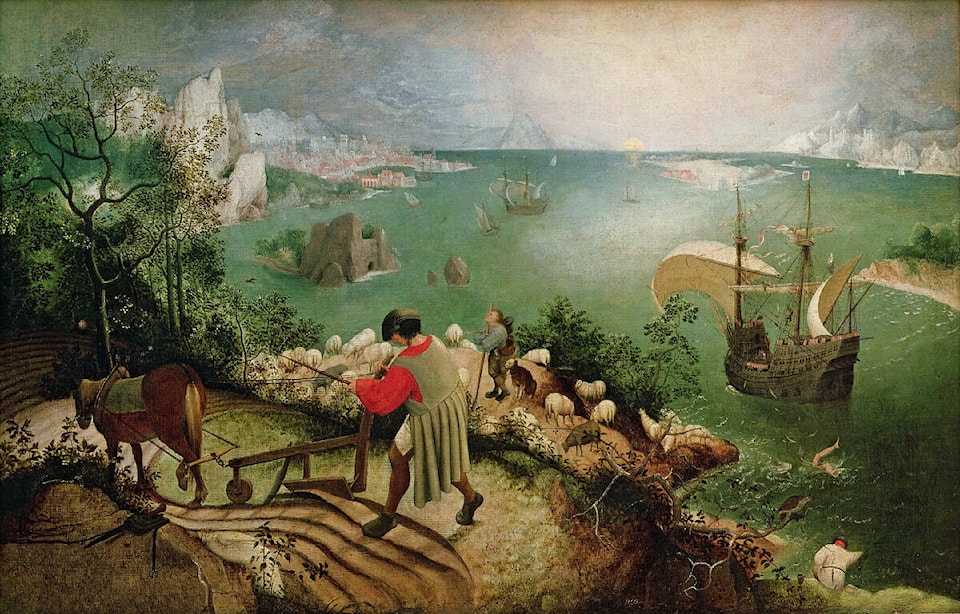In approximately 1560 the Flemish master Pieter Bruegel painted his masterpiece Icarus Falling Into the Sea; those interested should note the foot and feathers protruding from the water in the lower right, just below the caravel’s rudder. The rest of the work is a vast landscape that is ironically of far more interest than poor Icarus himself, because it documents the European discovery of the lateen sail and furrow plow at least 50 years before any written record.
For the importance of the lateen sail on commerce the reader may consult French historian Fernand Braudel’s introduction to his own masterpiece, The Structures of Everyday Life, considered by many to be the definitive work on the development of the world’s economy. Our own attention will remain on the furrow plow in the centre foreground, the earliest known picture of a plow that turns soil upside down, killing weeds, crumbling soil to make it easier to plant and releasing nutrients that produced a more abundant harvest. This revolutionized farming, and gardeners copied this method by digging their soil deeply, turning it upside down in shovel-sized clumps to allow the elements to break the soil down, making it easier to hoe and plant seeds. Braudel quite correctly credits this plow for the increase in short term food production that allowed an explosion in population growth, as well as an increase in the wealth of farmers and a demand for more consumer goods.
Sadly, there was a downside to this discovery that Professor Braudel overlooked. Yes, the nutrients that became available produced crops more abundantly in the short term, but weed seeds that had been sleeping quietly under the soil now came to the surface to sprout profusely throughout the garden. This has resulted in centuries of constant hoeing or hand-pulling for commercial farmers and backyard growers alike. Repeated plowing, tilling and digging the soil have exhausted the natural nutrients and crops have eventually suffered; in a sense our own food is suffering from malnutrition.
Chemical companies have addressed the problem with fertilizers containing nitrogen, phosphorus and potassium, the main nutrients that crops require. Crops have continued to grow but studies have shown that their nutritional content has decreased over the years, even when grown organically.
This is a huge problem. Disturbing the soil releases nutrients more quickly, creating the initial benefit Braudel noted, but plowing, tilling and digging kills soil life forms in the process, unlocking nutrients from their bodies but decreasing their numbers. In his book Entangled Life, author Merlin Sheldrake explains how fungi and algae threads fill the soil and plants growing in it. These threads can grow many metres long, connecting roots and filling even the leaves and stems of plants, exchanging sugars from the plants with nutrients they extract from the soil. He says: “the majority of green plants depend on their (fungi and algae) partners to survive…many studies have measured the transfer of substances between plants. Some have shown that not only carbon but also nitrogen, phosphorus and water can pass between plants via fungal networks.” Disturbing the soil breaks these threads.
Can we reverse this process? In my next column I’ll explain how some growers are overcoming this problem with no till gardening.
Please contact mary_lowther@yahoo.ca with questions and suggestions since I need all the help I can get.
